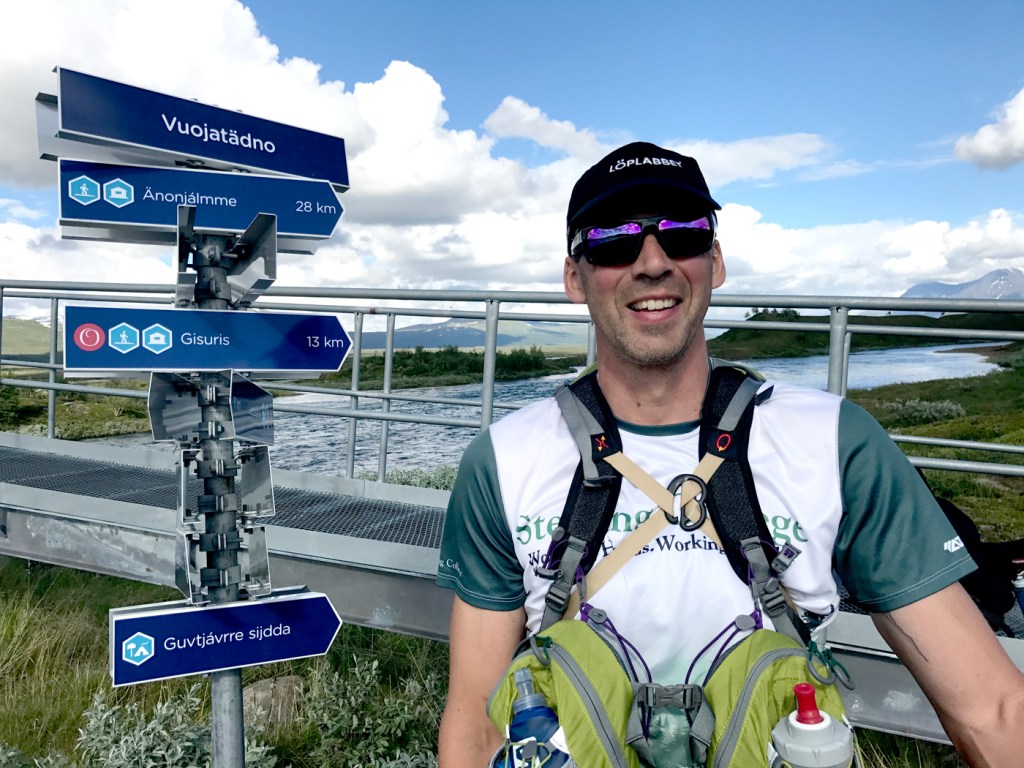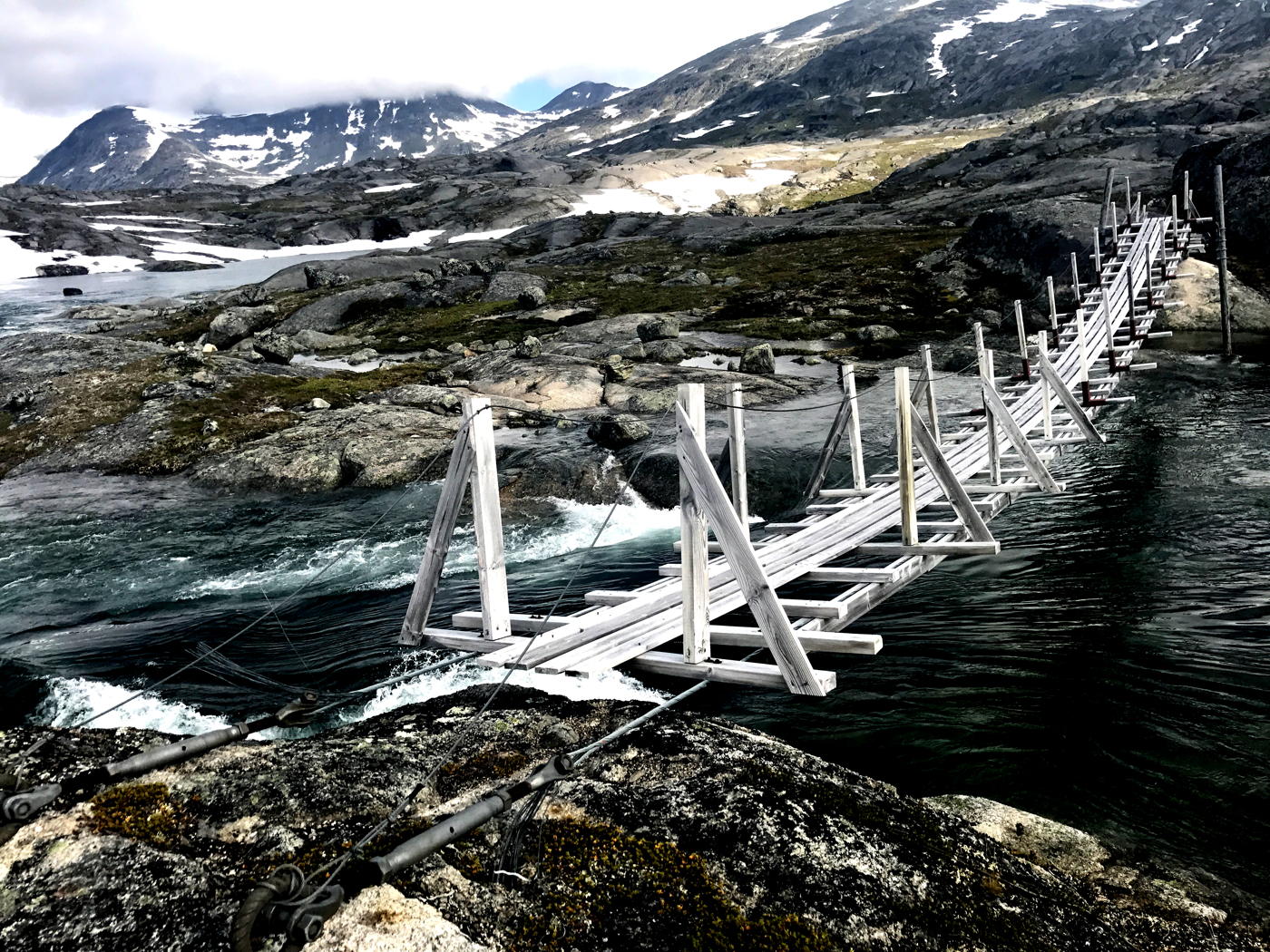Alumnus runs across the Arctic to promote ecological resilience

Photos by Pavel Cenkl, 2017 Scandinavia Climate Run
When Pavel Cenkl, PhD’03, puts his mind to something, the result can be a bit extreme.
So when he wanted to draw attention to environmental resilience in 2015, he set out on a 150-mile solo run across Iceland, putting in 14-hour days.
His first Climate Run resulted in a series of lectures and slide shows across the country— so he decided to do a second run last summer. This time his goal was 500 miles across Scandinavia, all of it above the Arctic Circle. Once again, he ran alone, carrying his tent, sleeping bag, food, clothing, and cooking gear as he ran across mountains, snowfields, arctic tundra, and raging rivers.



This run was also a success, even though a leg injury that began on day three and plagued him for five more days forced him to cut the run at the 225-mile mark.
“It could get difficult at times,” says Cenkl with characteristic understatement.
The perils of vastness
He described a rather dicey situation on day three of the eight-day run.
“I was on kilometer 30 for the day and navigation was a nightmare because the trail just disappeared,” he says. “I could see the line of snow-capped mountains that divided Norway and Sweden and I knew I had to keep running north to find the right pass.”
That required him to run across tundra that had no trail markers and ford an unmarked river created by late-season snowmelt. Eventually, he found himself at the edge of a broad marsh.
“I waded through the knee-deep bog hoping the trail would resume on the other side.”
It didn’t.

Cenkl spent a couple more hours lost in that valley before he finally found a stone trail marker part way up a mountain slope. It was now 5 in the afternoon and he’d been running since breakfast. But he was happy.
“I was having a deep spiritual connection with the place,” he recalls. “I had a deep sense of peace, and I felt like I could go on forever.”
He ran for six more hours, until he reached the edge of a river that had swollen far beyond its normal size.
“It was running as a Class II rapid and was at least chest deep because of the unusually late snowmelt,” he says. “I couldn’t believe I had run all that way and now there was no way for me to cross that river. It was 11 o’clock at night and I had been running since 7 in the morning.”
Cenkl said he had a panic attack, describing the only sane response to the situation.
He did his best to calm himself by cooking dinner, then pitched his tent in the Arctic twilight and fell into a deep sleep. When he woke a little after 5 a.m., the river sounded different.
“Before I even looked outside my tent, I knew this was my chance.”
During the night, the temperature had fallen, which slowed snowmelt and caused the river level to drop temporarily. He jammed all his gear into his pack and started across.
“It was waist deep and it was one of the scariest things I’ve ever done,” he says. “One slip and it would be over. It’s different doing this kind of thing with a group, but I was alone.”
Later that day, Cenkl found the mountain pass he was looking for and ran for five more days on his ailing leg. At the 225-mile mark, he met his wife and son at a prearranged resupply stop and determined that eight days running 12 to 16 hours a day would have to be enough.
“One slip and it would be over…”
Later that day, Cenkl found the mountain pass he was looking for and ran for five more days on his ailing leg. At the 225-mile mark, he met his wife and son at a prearranged resupply stop and determined that eight days running 12 to 16 hours a day would have to be enough.
A larger goal
By now you may be asking, “Why?”
First of all, he likes it. Pavel didn’t get into long-distance racing until he was in his 30s, and at 46 years old, he considers himself in his prime.
“You’re putting yourself out there and pushing yourself to your physical and mental limits,” he says. “There’s a blurring between yourself and the natural world that creates a greater connection with the nonhuman network. When I was lost, I had to give myself over to the environment. I was 30 kilometers into a 60-kilometer day and I had to search for the tiniest clue in the landscape to find my way.”
But for Cenkl, these Climate Runs are about more than personal enlightenment.
“I’m telling a story about the Earth’s resilience, using my run as a vehicle,” he says. “It provides me with a bully pulpit. I’m a teacher, and I wanted a broader voice.”
When Cenkl isn’t running, he’s a professor of environmental humanities at Sterling College in Vermont, where he also serves as athletic director and associate dean for academics.
“Many of my courses focus on resiliency and complex systems,” says Cenkl. “We look at the world as an interwoven economic, social, and environmental system. The goal is to remove humans from the center of the conversation and look at ourselves as one part of a much larger system.”
His two Climate Runs were designed to win a wider audience for his message.
“Some people will just want to hear about the experience and see the pictures,” he says. “So I use pictures of adorable reindeer to talk about impacts of climate change on the environment, the wildlife, and the indigenous Sami population.”

Cenkl explains that reindeer migrate inland during the winter and live off the lichen that’s buried beneath the snowpack. But as winters have grown warmer, there’s been more freezing rain, which results in a layer of ice under the snow that makes it difficult for the reindeer to dig to the lichen. If the reindeer populations shrink, the indigenous people will lose an important source of food.
“I chose Iceland for my first run because it’s a place where the impact of climate change is more apparent in the landscape than in other parts of the world,” says Cenkl. “Iceland is losing 11 billion tons of ice per year. When you remove 11 billion tons, the Earth’s crust begins to rise. This could have a dramatic impact on volcanic activity and the thermal energy that powers most of the island.”
What’s next
For the summer of 2018, Cenkl has his sights set on the Faroe Islands, a mountainous archipelago in the North Sea, that sits half way between Iceland and Norway. In a single day, he plans to run up the seven highest peaks, which amounts to 40 miles and an elevation gain of 16,000 feet.
In his fourth Climate Run—one much closer to home—he’ll bike through Vermont from the Canadian border to Massachusetts. He plans to complete the 210-mile bike trip in a single day, then turn around and run back to Canada along the mountainous Long Trail. He expects to spend 10 days running the 272-mile trail, which runs over Vermont’s highest peaks.
Cenkl credits Northeastern with planting the seeds for his systems perspective. While earning his doctorate in English, he focused his thesis on environmental literature. That research resulted in the publication of his first book, which was an environmental history of the White Mountains.
Since then, he has dedicated his life to spreading the word about environmental sustainability, both as a professor and as an athlete.
He says that his goal is to shift the conversation from “solving” environmental problems to looking at how humans can live harmoniously as one small part of a single, unified, ecosystem.
“I want to shift the narrative from one of resistance to one of resilience,” he says.





